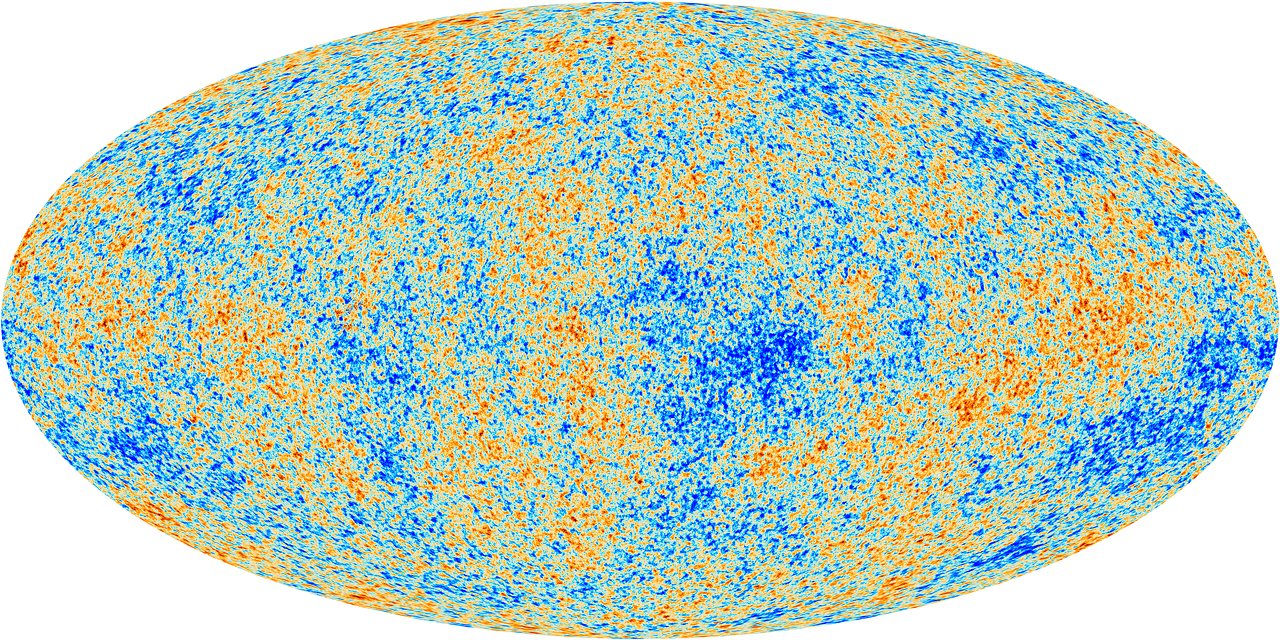Fluctuations in the cosmic microwave background
In 1965, radio engineers Arno Penzias and Robert Wilson accidentally discovered a faint, almost uniform glow of microwave radiation. This cosmic microwave background (CMB) is the afterglow of the big bang. It was produced when the Universe was some 380 000 years old, and had cooled down enough for photons (light particles) to travel freely through space. Tiny deviations from the CMB’s average temperature of -270.3°C are produced by small density fluctuations in the early Universe — the seeds of clusters of galaxies.
Credit:ESA and the Planck Collaboration
